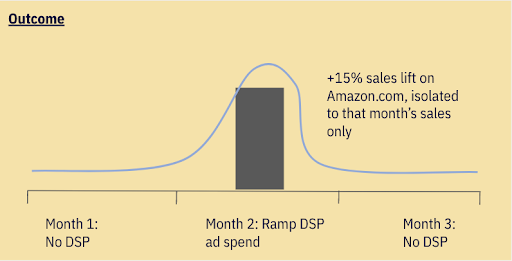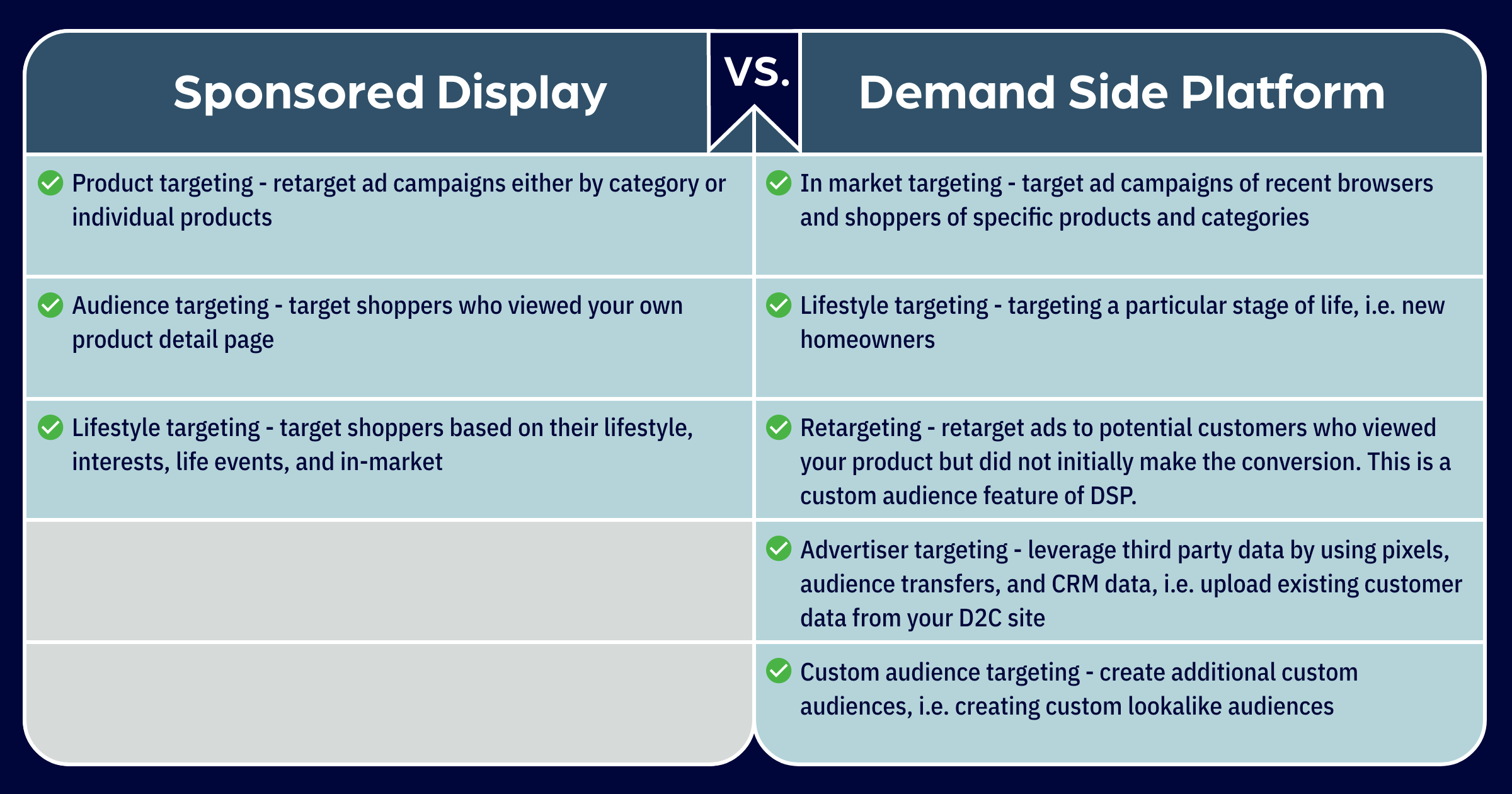Emily Ostrander is a PPC Manager at Acadia
Recently, I had a confectionary client tell me they didn’t see a point investing in ads through Amazon Demand-side Platform (DSP). The brand thought the Sponsored Display ads they created on Amazon.com were enough for them.
It’s a myth I hear a lot. Amazon DSP requires a reasonably sized upfront allocation, usually tens of thousands per month at minimum. Understandably, that figure can be daunting to many companies. But Amazon DSP offers a level of granular targeting that no other Amazon ad product can match—and all brands can benefit from turning it on.
With Amazon DSP, you can create audiences using product searches, page visits, and purchase histories. It’s easy to send ads out to people who recently bought from a competitor, for instance. You can also reach customers across many channels, including Twitch, Fire TV, and a slew of third-party websites.
Here are five myths I hear a lot about DSP—and why I think they’re wrong.
Myth #1. I don’t need to invest in DSP if I already use other forms of display advertising.
If you sell on Amazon, you probably already spend money on Sponsored Products, Sponsored Brands, and Sponsored Display ads. You might wonder, why add more?
The short answer is that DSP ads have capabilities that far exceed what’s possible with regular PPC advertising. DSP gives you far more extensive audience targeting options and even some broader creative options.
DSP also works well with on-site Amazon PPC ads to improve their quality. DSP is great for retargeting. If someone views your product on Amazon.com but that person doesn’t make a purchase, you can use DSP to show them ads on other platforms, like Twitch, perhaps sharing new features and benefits, and entice them into converting.
Another benefit of DSP is that it unlocks Amazon Marketing Cloud, a new toolbox from Amazon that lets you receive granular data about how your ads are influencing customer purchases, how many of your buyers are first-time purchasers, and so on.
Sponsored Display, Sponsored brand, and Sponsored Products ads only offer aggregated reports that can be frustratingly vague. Amazon Marketing Cloud gives you a far more detailed sense of how your ads are performing. Brands cannot unlock this powerful data without first running DSP ads.
Myth #2. Amazon DSP only displays ads on Amazon.com.
With DSP, you can reach customers while they are consuming media outside of Amazon.com. You can display ads on:
- Amazon-owned channels like Twitch, Fire TV, Freevee (formerly IMDbTV), and Kindle
- Third-party ad exchanges like Xandr, YieldOne, Fluct, and more. This means your ads can show on media sites like Vox and Forbes.
This ability to reach shoppers outside of the native Amazon.com shopping environment opens up many more opportunities to introduce shoppers to your brand, explain your product’s features and benefits, and remind them to repurchase.
Recently, we worked with a pet brand that felt they were hitting a wall with their paid search ads on Amazon.com. We started them on DSP for a one-month trial, to isolate results. We worked with them to deliver a video ad to Paramount+, Freevee, and Twitch.
The brand saw a 15% sales lift in its baseline Amazon sales during this period.

Myth #3. DSP only provides a top-of-funnel strategy.
Many brands assume that DSP is a pure awareness play. In fact, I’ve found that DSP can help you at all steps in the funnel. Here’s how:
Upper funnel: With DSP, you can tap into large connected-TV audiences through Amazon’s owned streaming properties like FireTV, Freevee, Twitch, and more. Even when these ads are above all meant to drive awareness, they can be more targeted (and cheaper for a brand) than a traditional linear TV ad.
Mid funnel: You can use DSP to locate customers who are in the market for a product like yours. Say you sell a product, like a shampoo, that customers tend to purchase on a monthly basis. You can target shoppers who bought a competing product last month and who are highly likely to make their new purchase in the coming days.
Bottom funnel: Retarget customers who already bought from you or who added your products to their cart.
DSP has a sophisticated re-targeting feature that lets you reach audiences both on and off Amazon.com. That way, you can push ads out to customers who bought from you before and who are due to replenish.
Myth #4. Only large brands will benefit from DSP.
The minimum spend requirement of DSP might understandably discourage smaller brands from using it. But even if you have a limited ad budget, DSP can actually save you money in the long run. By building highly specific audience profiles, you can:
- Make sure your spend goes toward the customers you most need to reach. These smaller, targeted audiences give a higher ROI.
- Target customers seasonally. If your product has seasonal peaks, you can turn on DSP ahead of those high sales periods. For instance, a brand that sells wrapping paper might want to focus on DSP ahead of the holidays.
- Whitelist and blacklist websites of your choice. I’ve had clients who sell supplements say they absolutely don’t want ads on Twitch, since the age range of the average user there tends to skew too young. You can easily exclude a site like Twitch with DSP.
Myth #5. A brand needs to sell on Amazon to have access to DSP.
Brands that are not endemic to Amazon—such as hotel, car, insurance, and even over-the-counter drug brands like Excedrin—represent a small but growing segment of DSP advertisers.
For good reason. Amazon gives brands a different type of information than competitors like Google or Facebook. While Google and Facebook can tell you who a customer is, Amazon can give you a clear sense of what they’re actually buying. Shopping data can unlock a lot more about a person than demographic information.
 Source: A State Farm ad on Twitch
Source: A State Farm ad on Twitch
- Hotel brands, for instance, might want to target customers who are searching for items related to travel on Amazon, such as suitcases or travel toiletries. These people are sure to be making travel plans in the near future.
Insurance companies: People usually buy new insurance when they enter a new stage of their life, such as by moving into a house or having a child. Is a customer buying a lot of baby products? Buying moving boxes? Both of these suggest a life change that makes someone ready to purchase insurance. They would be perfect to add to your DSP audience.
Ready to get started with DSP? Learn more about our Amazon DSP services.



